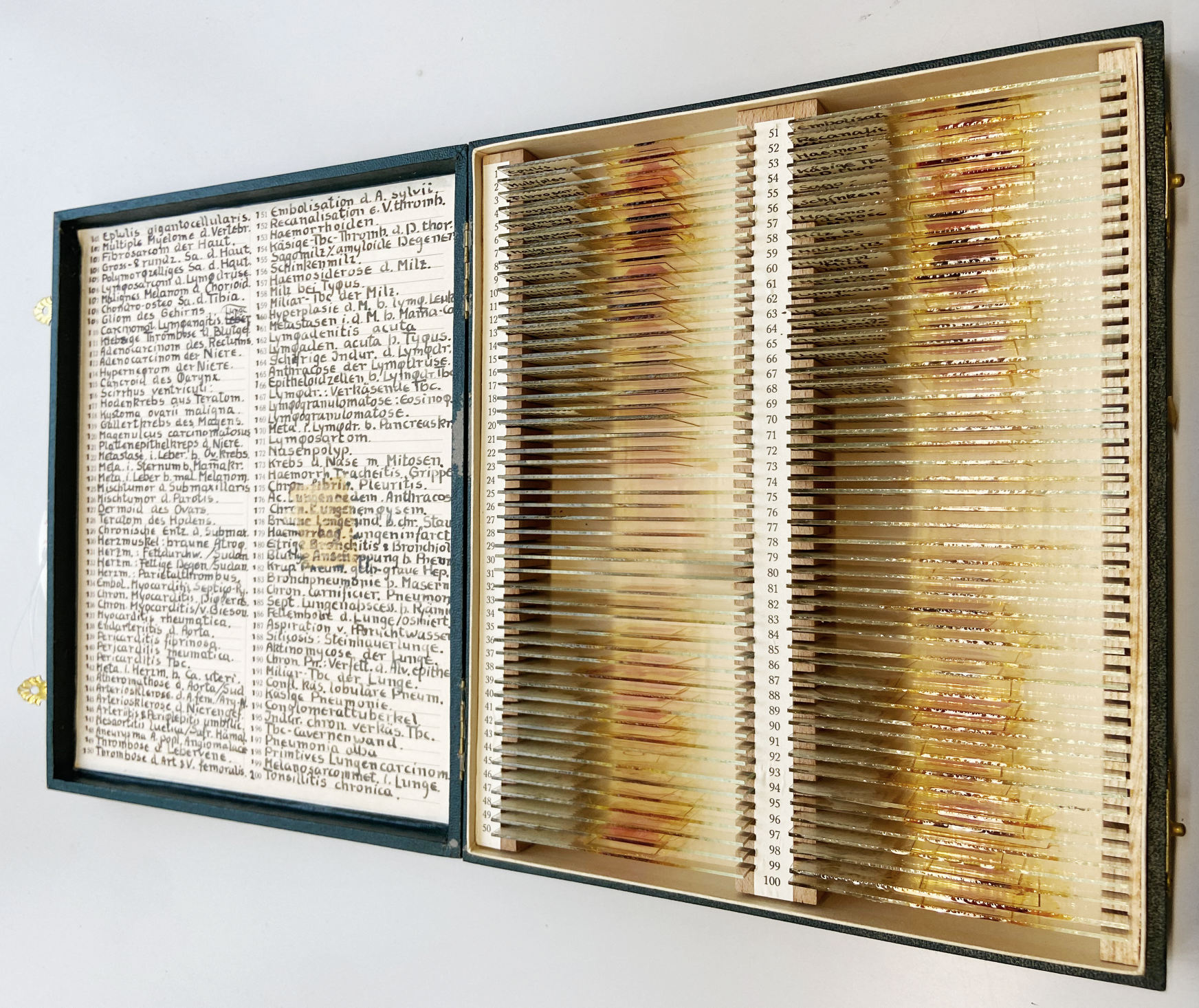Human Remains Collection
Research Access Form Request
For general inquiries, or if you have a research request, or are interested in making a specimen donation, please use this form (link zur Research Request Form) and send it to this address: info@iem.uzh.ch
The IEM Human Remains Scientific Committee decides on the permission for research and on the acceptance of specimens.
Research Access Form (PDF, 58 KB)
The Human Remains Collection
The IEM holds the following collections in dedicated special specimen storage rooms at Irchel Campus.
Researchers at the IEM work under the IEM Code of Ethics.
- Galler Collection
The Galler Collection is a historic Swiss bone reference series of high value for paleopathological research. The Galler Collection consists of approximately 1700 mostly dry-bone specimens of many major bone diseases, some of them dating back to the early 20th century. Clinical information and autopsy reports are available for the majority of specimens. Rarely documented conditions represented in the collection include: severe forms of myositis ossificans progressiva, kyphoscoliosis, endemic cretinism, hypo- and hyperparathyroidism, phosphorus-induced bone necrosis, and many more.
Literature
- Rühli FJ, Hotz G, Böni T (2003). Brief communication: the Galler Collection: a little-known historic Swiss bone pathology reference series. Am J Phys Anthropol 121 (1), 15-18.
To learn more about the collection, please contact Dr. Martin Häusler.
- Dalheim Collection
The Dalheim Collection contains the remains of at least 151 individuals excavated in 1989 from the Late Medieval monastery Dalheim (‘Kloster Dalheim’). The skeletal remains were recovered from 110 graves in the Bartholomaeus Chapel and nearby sheep stalls.
Literature
- Hofmann MI, Böni T, Alt K, Woitek U, Rühli FJ (2008) Paleopathologies of the Vertebral Column in Medieval Skeletons. Anthropologischer Anzeiger 66(1), 1-17
- Hofmann MI, Böni T, Rühli FJ (2010) Osseous Talocalcaneal Coalitions in a Medieval Skeleton (ca. 1050AD). International Journal of Osteoarchaeology 20(6), 623-629
- Olsen KC, White CD, Longstaffe FJ, von Heyking K, McGlynn G, Grupe G, Rühli FJ (2914). Intraskeletal Isotopic Compositions (d13C, d15N) of Bone Collagen: Nonpathological and Pathological Variation. Am J. Phys. Anthrop 153(4), 598-604
- Krüttli A, Bouwman A, Akgül G, Della Casa Ph, Rühli F, Warinner C (2014). Ancient DNA analysis reveals high frequency of European lactase persistence allele (T-13910) in medieval Central Europe. Plos One, published January 23, 2014.
- Warinner T et al. (Rühli F: shared last authorship) (2014). Disease and dietary reconstruction from ancient oral microbiomes. Nat Genet 46, 336-344.
- Pieper Roland (2003). Dalheim: Pfarrot-Kloster-Staatsdomäne, published by Ardey-Verlag Münster.
- Oslen KC, White CD, Longstaffe FJ, Rühli FJ, Warinner C, Salazat-Garcia DC (2016). Isotopic Anthropology of Rural German Medieval Diet: intra- and inter-population variability. Archeol. Anthropol. Sci.
To learn more about the collection, please contact Dr. Martin Häusler
- Other Collections
General Collection:
The General Collection contains skeletal and soft tissues, as well as casts, radiological images and other teaching materials, from a wide variety of sources. The General Collection is an expanding collection.
To learn more about the collection, please contact Dr. Martin Häusler.
Visitor and temporary Collection:
The Visitor and Temporary Collection includes specimens that are on temporary loan to the Institute of Evolutionary Medicine.
Histology Collection:
The Histology Collection comprises specimens prepared for histological analysis and includes histological slides and paraffin-embedded samples e.g. from Iranian Salt-Mummies, the baby woolly Mammoth Lyuba Egyptian mummies, a Greek mummy, a mediaeval brain, mediaeval bones, etc.
To learn more about the collection, please contact Dr. Martin Häusler.
- Wet Specimen Collection IEM UZH
To learn more about the collection, please contact frank.ruehli@iem.uzh.ch
Literature
- Fluid Preservation: A Comprehensive Reference. John E. Simmons, Rowman&Littlefield, 2014.
- Beyond the Museum Walls. Medical Collections and Medical Museums in the 21st Century. The 19th European Association of Museums of the History of Medical Sciences biennial Congress, Barcelona (Spain), September 2018. Ed. By. Alfons Zarzoso.
- Swiss Academies Communications: Handbook on natural history collections management – A collaborative Swiss perspective. Holger Frick, Michael Greeff, 2021.
Datenbank-Projekt / Database Project for the Human Remains Collection IEM

E: The Institute of Evolutionary Medicine owns one of the few collections of historical human remains in Switzerland: The Human Remains Collection. This collection consists of about 20,000 objects and specimens of human origin, the majority of Swiss provenance: dry and wet preparations as well as bones from pathology and forensic medicine, tissue samples and a small group of mummies.
In order to improve access to the collection for internal as well as external research and teaching, this unique collection will be re-catalogued and inventoried from March 2023 until August 2024 as part of a project funded by SCNAT (https://scnat.ch/en).
D: Das Institut für Evolutionäre Medizin besitzt eine der wenigen Sammlungen historischer menschlicher Überreste in der Schweiz: Die Human Remains Sammlung. Diese Sammlung besteht aus rund 20'000 Objekten und Präparaten menschlichen Ursprungs, mehrheitlich schweizerischer Provenienz: Trocken- und Nasspräparate sowie Knochen aus Pathologie und Rechtsmedizin, Gewebeproben und eine kleine Gruppe von Mumien.
Um den Zugang zur Sammlung sowohl für die interne als auch für die externe Forschung und Lehre zu verbessern, wird diese einzigartige Sammlung von März 2023 bis August 2024 im Rahmen eines von der SCNAT finanzierten Projekts neu katalogisiert und inventarisiert (https://scnat.ch/de).
